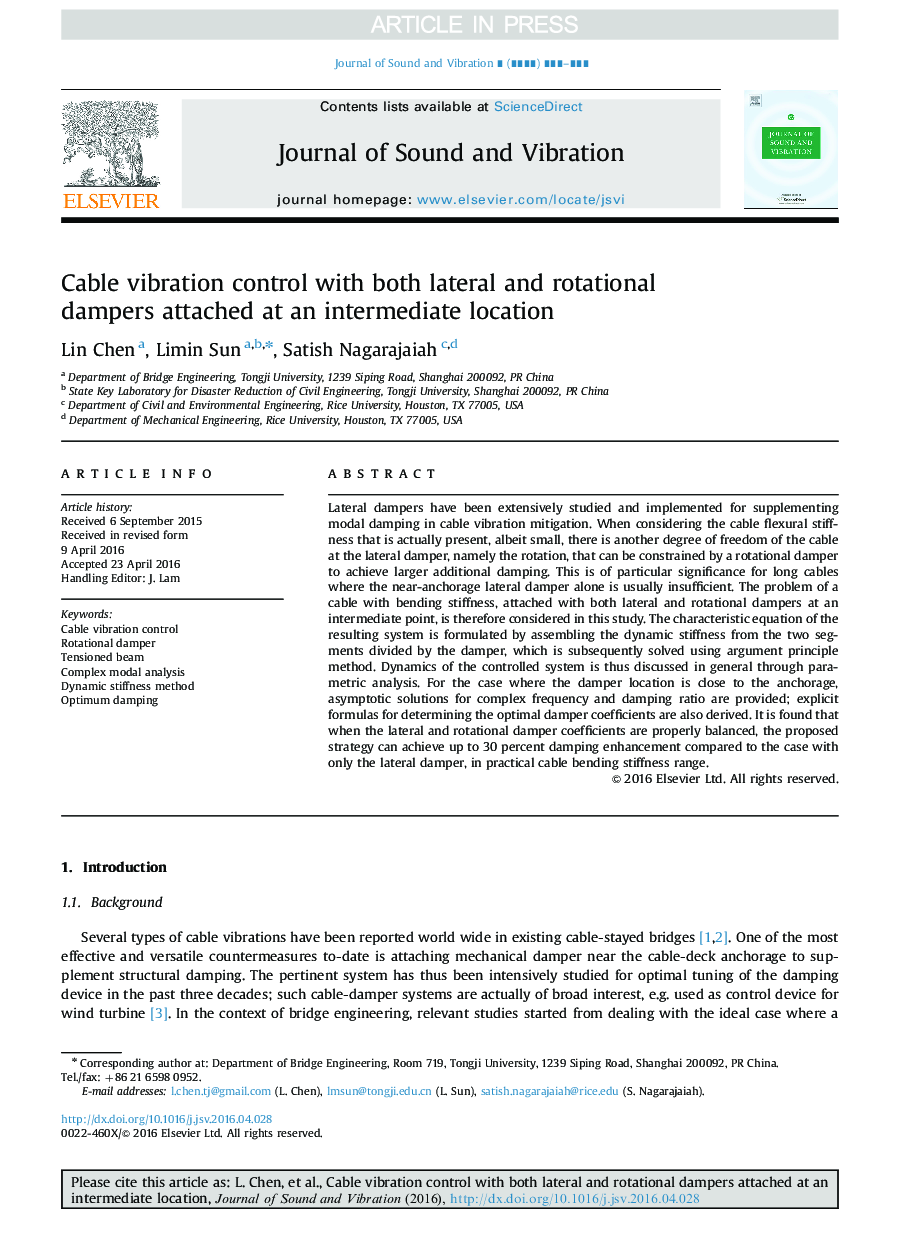| Article ID | Journal | Published Year | Pages | File Type |
|---|---|---|---|---|
| 6754392 | Journal of Sound and Vibration | 2016 | 20 Pages |
Abstract
Lateral dampers have been extensively studied and implemented for supplementing modal damping in cable vibration mitigation. When considering the cable flexural stiffness that is actually present, albeit small, there is another degree of freedom of the cable at the lateral damper, namely the rotation, that can be constrained by a rotational damper to achieve larger additional damping. This is of particular significance for long cables where the near-anchorage lateral damper alone is usually insufficient. The problem of a cable with bending stiffness, attached with both lateral and rotational dampers at an intermediate point, is therefore considered in this study. The characteristic equation of the resulting system is formulated by assembling the dynamic stiffness from the two segments divided by the damper, which is subsequently solved using argument principle method. Dynamics of the controlled system is thus discussed in general through parametric analysis. For the case where the damper location is close to the anchorage, asymptotic solutions for complex frequency and damping ratio are provided; explicit formulas for determining the optimal damper coefficients are also derived. It is found that when the lateral and rotational damper coefficients are properly balanced, the proposed strategy can achieve up to 30 percent damping enhancement compared to the case with only the lateral damper, in practical cable bending stiffness range.
Related Topics
Physical Sciences and Engineering
Engineering
Civil and Structural Engineering
Authors
Lin Chen, Limin Sun, Satish Nagarajaiah,
